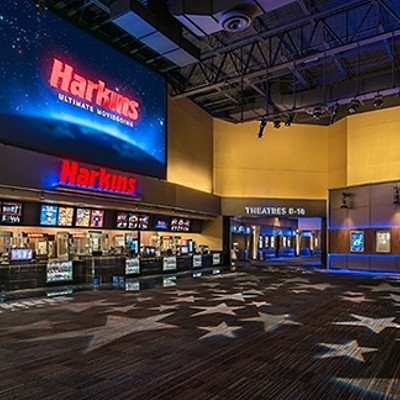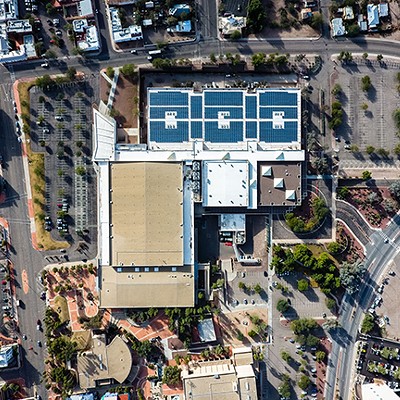In place for 20 years, the billboard on the west has to go in order to make room for the overpass to be reconstructed, a $25 million project slated to begin in March. That means Pima County can either pay to have the sign removed, or allow its nearby relocation.
Initially it appeared the monstrous board with two 400-square foot casino gambling signs would disappear from where it sits along railroad tracks. A year ago the county had it appraised at a value of $77,600, and determined, "relocation will not be considered." In March it was concluded the billboard would need to be removed shortly.
At the same time, however, Jones Outdoor Advertising, which owns the sign, had its own appraisal performed. That report showed it was worth three times the county's amount. The company decided to attempt to have the billboard relocated further west, out of the way of the new overpass.
In order to accommodate that move, in August the District 2 Board of Adjustment granted a series of variances after they heard county staff support. This action permitted the sign to exceed the 75-square-foot legal maximum, to be 70 feet high instead of the allowed 16, and to "be relocated and altered without compliance to zoning standards."
The Board of Supervisors considered the issue in November, and by a 3-2 vote agreed to allow the sign to be moved. County administrator Chuck Huckelberry said he supported the relocation since it was being caused by a county project, the surrounding land use is industrial, and the uncertain cost of acquiring the billboard. "If we're ever going to allow a billboard to be relocated," Huckelberry said, "this is it."
Supervisor Ann Day, who along with Dan Eckstrom and Ray Carroll voted in favor of the move, insists she is usually anti-billboard. But in this case, she says, the company followed the rules, the request was reasonable and the board needed to be reasonable in return.
The supervisors' vote came over the objection of the city of Tucson. Its position was that governments should, "take advantage of the opportunities when presented to remove [billboards] and curb visual blight ..."
Other opponents of the move point out some apparent hypocrisy in the board's action. They indicate that close to $1 million will be spent on landscaping for the new overpass, but the county wouldn't provide $77,600 to bury an unsightly billboard.
Those against the move also point out one of the goals of the county's sign code which states, "Encourage the clear visibility of the mountains and desert environment and improve the visual appearance of the community."
Brad Holland of the Midtown Neighborhood Association was stunned by the vote and thinks the board made a big mistake. "They missed the boat on what makes a community better," he says. "This sign is just blight and blocks a driver's view of a beautiful vista. They think this is good business, but I don't know how the board was convinced this was a pro-business vote."
Associate Director for Luz Social Services Rene Salgado agrees, saying, "This shows where the county's priorities are. They're not with beauty, but the dollar bill."
Salgado's agency also has another problem with the content of this and other southside billboards, since they often advertise gambling or alcohol consumption. "That portrays Hispanics poorly," he says, "and is not a positive image."
Longtime community activist Mark Mayer doesn't mince words when it comes to the overpass case. "This is the most outrageous thing I've seen in 10 years of working on billboard issues," he says. "Just because this situation was caused by the county doesn't mean they should break their own code regulations. This is a special favor to the billboard industry."
Mayer believes he knows why county officials not only allowed the relocation of the billboard, but actually worked to accommodate its move. After the Board of Supervisors voted in May to begin legal action against five billboards along I-10 near Ruthrauff Road (See "Size Matters," January 31, 2002), Mayer says, "The county flipped on the Veterans Memorial Overpass sign because of the strong position taken on the I-10 boards. They supported the relocation because of a backroom deal with representatives of the billboard industry."
Pima County's John Bernal denies Mayer's accusation. "This situation shouldn't be read as a way to balance the two issues," he says. "We take them on a case-by-case basis." Then, after stressing the Veterans Memorial Overpass billboard might have cost more than $200,000 to acquire, he adds, "Negotiations over relocation are one option we should explore. If amicable, [the process] can avoid condemnation. Why not approach it that way?"
The Jones Outdoor Advertising billboard still has a way to go before it can be relocated. The company must return to the Board of Adjustment to obtain additional variances, including being too close to another sign and for violating other county regulations. Opponents plan to attend the meeting to express their opinions.












